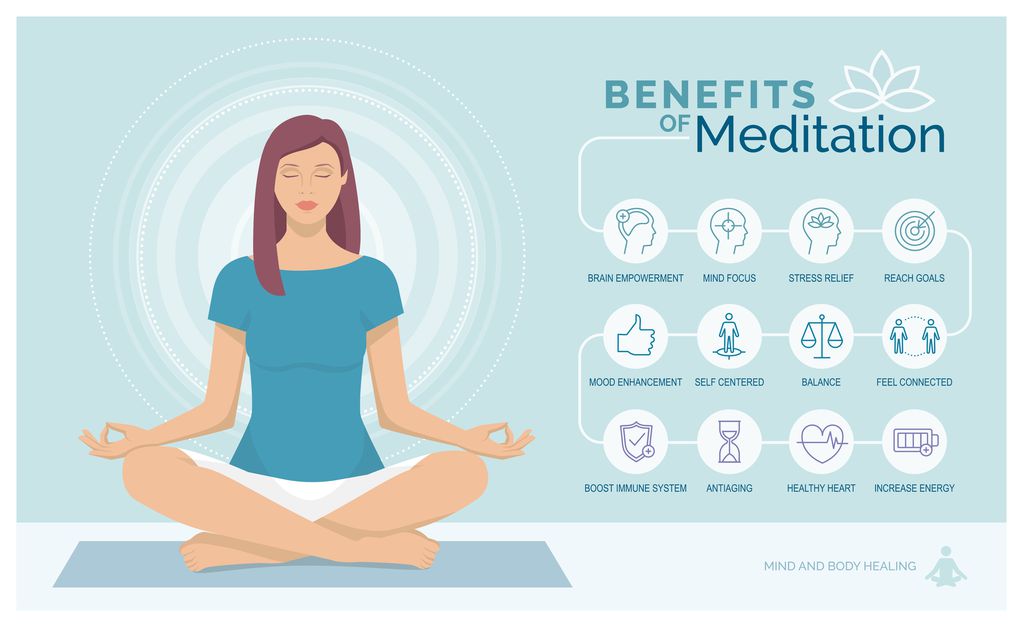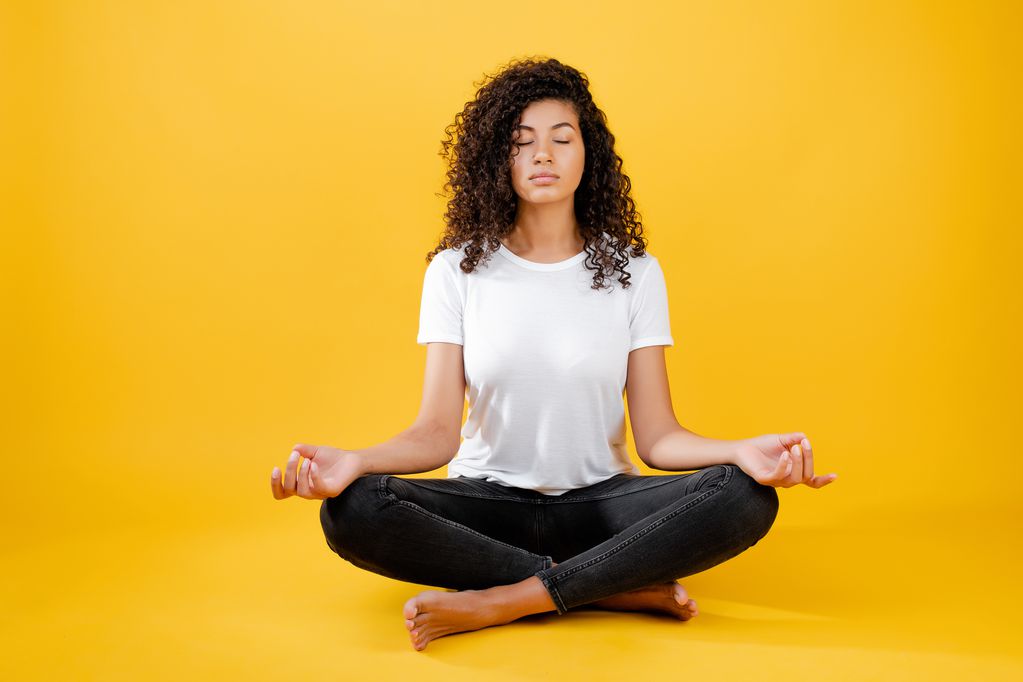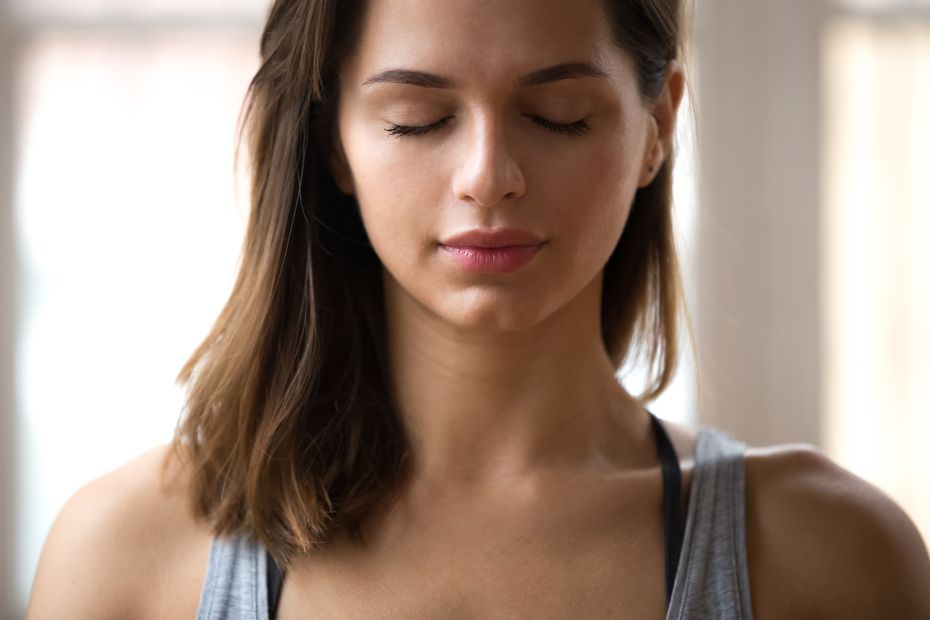Meditation can seem like an overwhelming practice to start. While it is simple on the surface, the actual nuts and bolts of what is going on seem rather elusive. This is especially in a culture such as ours that encourages a go-go-go lifestyle all the time, where sitting still with nothing to do seems more like a punishment than a reward. Meditation does not have to be hard, though. And it doesn’t have to feel like punishment. It can, quite literally, be as easy as breathing and as refreshing as a mini-vacation to the beach. If you are interested in starting a meditation practice, please read on!

How do I meditate?
If you’ve never meditated before, it can be hard to figure out what exactly you are even supposed to do. Essentially, meditating is simply sitting still for a few minutes to be focused and accepting of the moment. So let’s look at each of these components of meditation: position, time, focus, and acceptance.
Position
First, let's look at the position you choose for meditating. I suggest a position that is ergonomic but not super comfortable. You definitely don’t want to be in pain while meditating, especially if you are going to be at it for an hour. But if the position is too comfortable, you are likely to fall asleep or lose focus. Ideally, you want a position that you can maintain for a long period that keeps your body aligned, steady, and alert.
The lotus pose (also known as the criss-cross apple sauce) is ideal for meditating, which is why it has been used for centuries. In this position, you simply sit on the floor, or a soft cushion, with your legs crossed. Your spine is straight, your weight evenly distributed side to side, your shoulders resting over your hips, and your hands rest on your knees or in your lap. If you use this position, be mindful of your spine and hips, checking now and again to ensure you are not slouching forward or leaning to the side. 
The Lotus pose can also be adapted to fit your needs. If it is hard (or painful) to keep your spine straight, you can find a wall or other flat surface to help support your back. Remember don’t slouch against the wall, but rather allow your back to be subtly supported. Lean enough to support your back, but not so much that you would fall over if the wall were suddenly taken away from supporting you. You may also want to support your knees. Placing a small pillow or rolled-up towel under your legs can help keep them in position. This can help reduce stress on the hips, knees, and ankles. And it reduces the likelihood your foot (or feet) will fall asleep during longer meditations.
If lotus isn’t for you, then the next best position is simply sitting. Again, you want to be mildly alert, not ridiculously comfortable. So instead of leaning back in a recliner, try sitting in a straight back chair instead. In a sitting position, the same principles apply. You want to keep your spine straight, your weight evenly distributed side to side, and your shoulders over your hips. It is also best to keep both feet flat on the floor so that your whole body can stay aligned.
Time
How long do you meditate for? Well, this really depends on you. It depends on how much time you have available, how long it takes you to get into the practice, and how long you can handle meditating. I have found that it usually takes me about 15 minutes of sitting to just get to the point of meditation. So I try to set aside 30 minutes to 1 hour for my meditations. For the first 15 minutes, I’m typically fighting my mind and body and giving myself the time I need to “let go of my go-go”. The time it takes to transition from doing to being is slightly different for all of us, and it depends on your mood that day and how frequently your practice meditation. As you meditate more frequently, you will begin to know how long you need. To start with, I recommend around 20 to 30 minutes if you are not using any guides or prompts.
Focus
The next piece of meditation is focus. Meditation is not about letting your mind wander and drag you behind in its wake.  It is about focus. What you focus on depends on the type of meditation you are doing. Some people choose a sound or phrase to repeat, either aloud or in their head, and they focus on the chanting. Others focus solely on their breath. Others choose a visual focus that is either in their head or in the environment. Choosing what to focus on is ultimately up to you. I suggest trying different focuses until you find what works best. Personally, when I meditate, I typically focus on my breath. I find if I focus on anything else it tends to distract me from the meditation and actually makes me more anxious.
It is about focus. What you focus on depends on the type of meditation you are doing. Some people choose a sound or phrase to repeat, either aloud or in their head, and they focus on the chanting. Others focus solely on their breath. Others choose a visual focus that is either in their head or in the environment. Choosing what to focus on is ultimately up to you. I suggest trying different focuses until you find what works best. Personally, when I meditate, I typically focus on my breath. I find if I focus on anything else it tends to distract me from the meditation and actually makes me more anxious.
Whatever you choose to focus on, there is a balance to the focus. You don’t want to be so focused that your eyes are scrunched, and your body is rigid. But you don’t want to be so unfocused that you forget what you’re doing either. A great analogy for focus is your sitting position. Imagine sitting and talking with someone and you are so enthralled with their story that you are leaning forward, mouth slightly open, eyes wide. This is too focused on meditation. Now imagine talking with the same person and being so disinterested that your head is lolling back, your body is canting to one side, and your jaw is so slack you might soon start drooling on yourself. This is not focused enough on meditation.
The focus you are aiming for is a gentle, removed interest. You are sitting up straight and you are engaged. The topic is interesting but not fascinating. You want to know about the subject, but you are not being graded or expected to remember anything. This is the focus you are working towards.
Acceptance
The last piece of meditation, and the hardest, is acceptance. When meditating you are, to some extent, surrendering your control of the moment and choosing, instead, to accept what happens as it is without judgment or reaction. You are not forcing yourself to relax, but rather you are accepting whatever tension you find and allowing it to be. You are not slowing your breathing or making it even, but rather you are accepting each breath exactly as it comes. This acceptance extends to the whole body. Especially in the first few minutes of meditation, you will likely be uncomfortable or itchy. Do your best to accept this and not react.
Our minds are used to constant movement and thought and a certain level of stress is present. When we pause for a moment and start to activate the relaxation response, our bodies may temporarily fight to go back to what they are used to. This is especially true if you are an anxious person or someone who finds it difficult to relax. Your body will believe that stress is its normal state and try its best to get you back to that state. This may come across as increased feelings of anxiety, a rush of thoughts, and/or random physical sensations of pain or itching.
It is very helpful to remind yourself that you are not required to react. Just because your nose itches, does not mean you need to scratch it. It is ok for your nose to simply itch. It is just a sensation and it will pass regardless of whether or not you react to it at this moment. You can even choose to focus on the sensation. Do not obsess about the itching, though, just keep your focus gentle and removed. Gently explore the feeling by considering where the feeling is, the nature of the sensations, if the sensation is constant or if it comes and goes. Keep yourself removed by trying to think of it as though the itching is happening to someone else. Whether the experiences are physical sensations, internal feelings, or simply thoughts, if you can sit with them for a few minutes (or in some cases a few seconds), they will typically fade if you accept them.
How do I know if I’m doing it right?
Meditation, especially at first, can seem like a very subtle practice. Initially, it may feel more like just sitting there than anything else. In fact, the first few minutes of any meditation are likely going to be just that, sitting there. It takes a few minutes and a little practice for your body to calm down enough to enter a meditative state. The time it takes to feel this shift will differ from person to person and day to day. So if initially, you feel like nothing is happening, don’t be discouraged. Even just sitting quietly has positive benefits. Practice that accepting state of mind and accept the sitting.
I have found that slipping from sitting into meditation is a lot like falling asleep. You often don’t realize the exact moment it has happened. But at some point, you will be aware of the subtle shift. The feeling of meditation is going to be different for everyone. Generally speaking, though, it feels like what it is, which is focus and acceptance. It simply feels like doing those things gracefully instead of forcing them.
The biggest difference I notice is in my thoughts. When I first sit to meditate, my thoughts are like the rapids of a river. They are tumultuous, bashing against rocks, spraying everywhere, with seemingly no order.  They take all of my focus and energy. Eventually, though, I will notice that my thoughts become more like a slowly flowing river. They are still there, and I am still aware of them, but they don’t require my constant awareness. I simply sense them and feel them gliding by.
They take all of my focus and energy. Eventually, though, I will notice that my thoughts become more like a slowly flowing river. They are still there, and I am still aware of them, but they don’t require my constant awareness. I simply sense them and feel them gliding by.
The other shift I notice is in my body. The first few minutes of a meditation session, for me, are uncomfortable. My back hurts, my nose itches, I get random pains in random places. As I drift deeper into the meditation, these sensations decrease drastically for me. And, when they do occur, I feel a lot more removed about them. Initially, I feel like every discomfort needs to be met with a corresponding wiggle or scratch. Eventually, though, when I do feel discomfort, I no longer feel the impulse to do something about it. I am simply aware of it. I can examine it, be interested in it, then let it go.
How do I get started?
If you are brand new to meditation, I recommend starting with guided meditation. Guided meditations are a great way to meditate with a safety net. One of the best things about them is that they provide you with a script, so you know exactly what to do. Instead of spending your time wondering if you are doing it right, you just listen to the calming voice. Guided meditations also provide a focal point for your thoughts. If you are not quite ready to simply be with your thoughts, these guided practices help ease the way. There are also many guided meditations available that walk through various relaxation processes. If you are an extremely tense person, then knowing how to relax and how to calm yourself is an excellent tool to learn.
Guided meditations are available on CDs, as audio files, and on YouTube. The best search term to use is “guided imagery.” Guided imagery is a potent therapeutic tool, so the results you find can be very diverse. Take a few minutes to look through them and be selective about what guided imagery you start with. You don’t want to accidentally jump into serious trauma work when you don’t yet even know how to be calm. For your first few times, use a short script (around 5 minutes) to give yourself a taste of what to expect. And make sure you find a soothing voice. You don’t want to be constantly distracted by someone’s accent or how they sound like that aunt of yours you don’t get along with. As you get used to guided meditations, you can start exploring different themes and identify what length works best for you.
I suggest starting with one of these two themes: “Creating a Safe Place” or “Progressive Muscle Relaxation”. Safe place guided imagery walks you through the experience of being somewhere safe. It helps you learn to create a little bubble of space in your mind where everything is ok and nothing can hurt you. I still use my “safe place” today when I need to calm down and ground myself. Progressive muscle relaxation helps you focus on your muscles, body, and breathing. It helps teach you to find tension in your body and let it go. Progressive relaxation guided meditations are a great stepping stone to unguided meditation practices, as they help you start learning to focus on the moment and the now.
This a good introductory Safe Place guided imagery: https://www.youtube.com/watch?v=G1bxxiiXc48
This is a good Progressive Muscle Relaxation exercise: https://www.youtube.com/watch?v=1nZEdqcGVzo
Once you feel comfortable with guided meditations, start exploring other mediation options. There are dozens of meditative practices, some will work better for you than others. It might take a bit of research and time, but eventually, you will find something that fits just right.
Meditation for Beginners